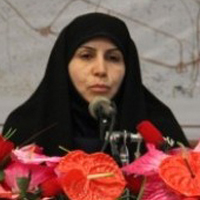Evaluation of Quality of Life among Women of Reproductive Ages in Cities of Sistan and Baluchistan Province, Iran: An Application of Pander Health Promotion Model
This descriptive-analytical study aims to investigate the socio-demographic determinants of the quality of life among women aged 15-49 years in Sistan and Baluchestan Province, Iran, using the Pender’s health promotion model on a sample size of 800 cases. The sampling was performed using a multi-stage cluster method, and the data were collected using questionnaires.The data were analyzed using descriptive statistics, Pearson correlation coefficient, independent t-test, analysis of variance, and multiple linear regression. The results of the regression models revealed that perceived self-efficacy had the highest predictive power for the variable of the quality of life (Beta=0.288). Other factors predicting the quality of life among the women under study included perceived barriers, health-promoting lifestyle, age, number of children, and perceived emotions, respectively. In total, these six variables predicted 32.8% of the changes in women’s quality of life. According to the results of the present study, it can be concluded that the components of the Pender’s health promotion model, including perceived self-efficacy, perceived barriers, and health-promoting lifestyle are suitable for predicting women’s quality of life.
-
Identifying and Prioritizing Effective Factors on the Criminalization of Document Forgery with a Law Enforcement Approach
Hojat Motaghi *, Ali Mohammad Ahmadvand, , Hossein Vafadar
Entezam - e - Ejtemaei, -
Analysis of Social Engineering in the 2022 Unrest by Foreign Media
Fariba Shayegan, Hojat Ahmadi *
Intelligence and criminal research journal,


